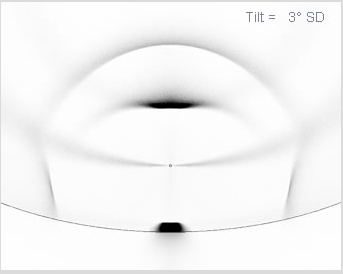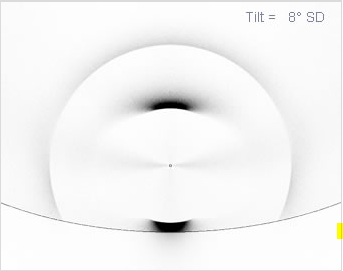46° halo formation
Understanding the Formation of the 46° Halo
Atmospheric optics is a fascinating field that explores the beautiful phenomena occurring in our skies. One such phenomenon is the formation of the 46° halo, which is a circular halo that appears around the Sun or Moon. In this article, we will delve deeper into the science behind this optical wonder and explore its intricacies.
The traditional explanation for the formation of the 46° halo involves the path of rays through randomly aligned crystals. These crystals have side faces and end faces, through which the rays enter and exit. The inclination of these faces at 90 degrees to each other results in a minimum deviation angle of approximately 46 degrees. However, it is important to note that many rays are deflected through larger angles, giving the halo a diffuse outer edge.
To understand this phenomenon better, let's take a closer look at the crystal structure. When rays pass between a side face and an end face of column-oriented crystals, they can form supra- and infralateral arcs. These paths are the same as those that produce the 46° halo from randomly oriented crystals. However, when these oriented columns have large wobbles or tilts, interesting variations occur.
Increasing the wobble of the crystals leads to distinct changes in the appearance of the halos. Tilts of up to 3 degrees result in clear infra- and supralateral arcs with a characteristic cusp at the parhelic circle. As the tilts increase, the inner edges of these arcs become more circular. Interestingly, halos from tilts of 5 - 8 degrees closely resemble a 'true' 46° circular halo when observed in the sky. In fact, tilts of 35 degrees can produce both 46° and 22° halos that are almost indistinguishable from those formed by randomly oriented crystals.
It is worth noting that there may not always be a clear distinction between 46° halos and supralateral arcs. Some "46° halos" are actually the result of wobbly column crystals. This highlights the complexity of atmospheric optics and the various factors that can influence the formation of these optical phenomena.
In summary, the formation of the 46° halo is a captivating process involving the path of rays through randomly aligned crystals. While the traditional explanation involves the inclination of side faces and end faces at 90 degrees, the presence of wobbly column crystals can lead to variations in the appearance of the halo. Understanding these intricacies adds to our appreciation of the wonders that occur in the sky above us.

46° halo ray path through a randomly aligned crystal. This is the traditional explanation for the halo.
Rays enter and leave a side face and end face of a randomly aligned crystal (paths 13 or 31).
The faces are inclined 90º to each other and the resulting minimum deviation angle is ~46°. However, a great many rays are deflected through larger angles and give the halo a diffuse outer edge.
The 90° wedge disperses the colours more widely than those of the 60° wedge forming the 22° halo.




46° halo or supra-/infralateral arc? Column oriented crystals form supra- and infralateral arcs when rays pass between a side face and an end face. These are the same paths as those that produce a 46° halo from randomly oriented crystals .
But what happens when oriented columns have large wobbles, as can large or equidimensional crystals? Mouse slowly over the slider from bottom to top to see the effect of increasing wobble.
Tilts.. up to 3° produce clear infra- and supralateral arcs with a characteristic cusp at the parhelic circle. At larger tilts the arcs' inner edges become more circular. Halos from tilts of 5 - 8° would be difficult to distinguish in the sky from a 'true' 46° circular halo. Tilts of 35° produce both 46° and 22° halos that look almost the same as those of randomly oriented crystals.
In some cases there is no real distinction between 46° halos and supralateral arcs. Some "46° halos" are the products of wobbly column crystals.
.. Tilts quoted are the standard deviation of a normal distribution with a mean of zero.
Note: this article has been automatically converted from the old site and may not appear as intended. You can find the original article here.
Reference Atmospheric Optics
If you use any of the definitions, information, or data presented on Atmospheric Optics, please copy the link or reference below to properly credit us as the reference source. Thank you!
-
<a href="https://atoptics.co.uk/blog/46-halo-formation/">46° halo formation</a>
-
"46° halo formation". Atmospheric Optics. Accessed on December 22, 2024. https://atoptics.co.uk/blog/46-halo-formation/.
-
"46° halo formation". Atmospheric Optics, https://atoptics.co.uk/blog/46-halo-formation/. Accessed 22 December, 2024
-
46° halo formation. Atmospheric Optics. Retrieved from https://atoptics.co.uk/blog/46-halo-formation/.